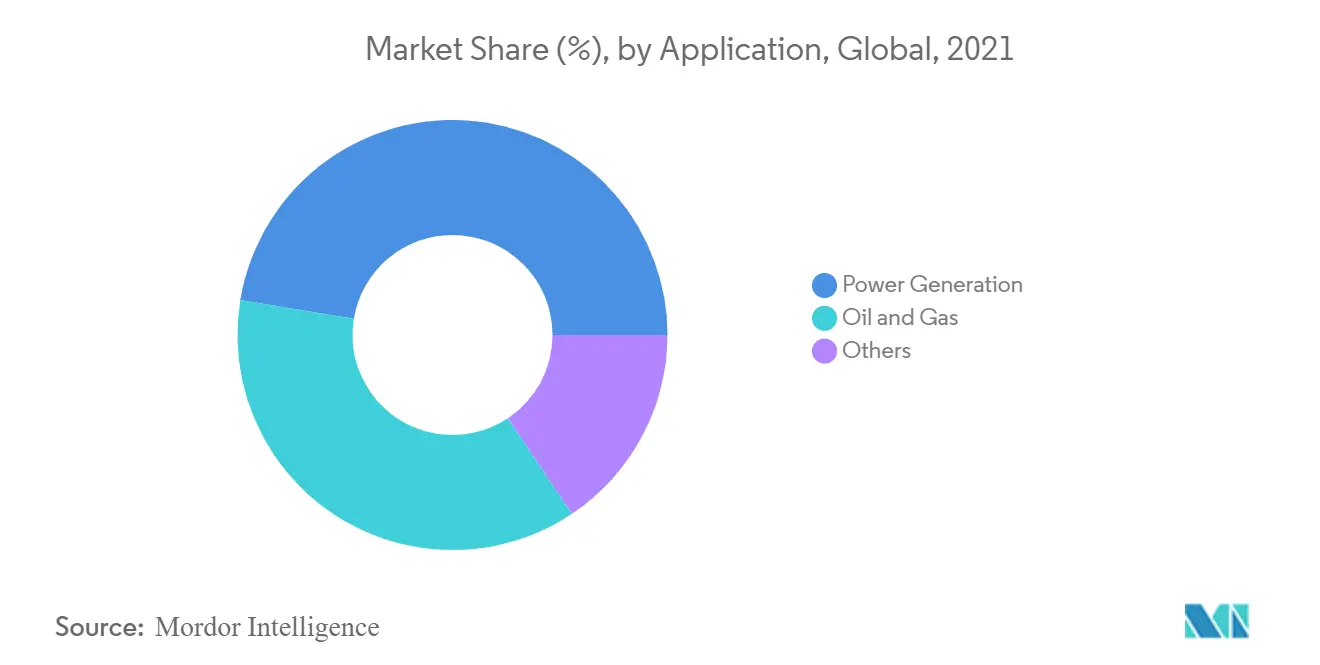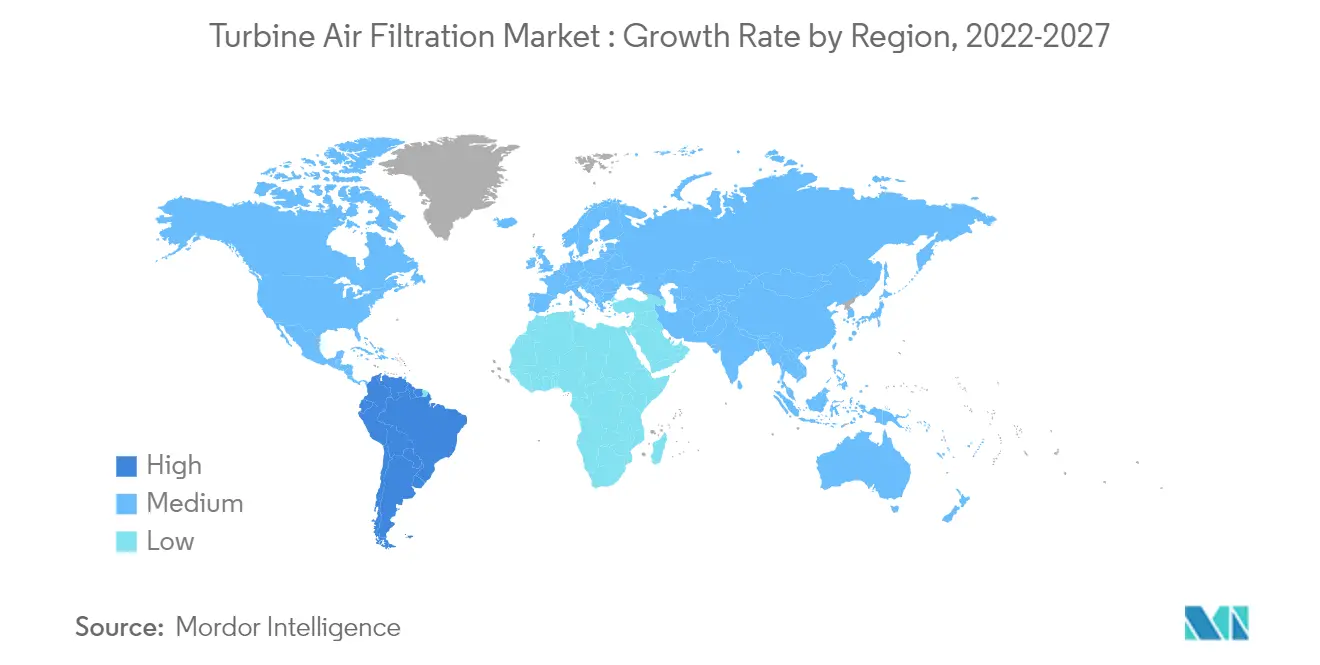Market Trends of Turbine Air Filtration Industry
This section covers the major market trends shaping the Turbine Air Filtration Market according to our research experts:
Power Generation Segment to Dominate the Market
- The power generation industry, being one of the core industries, lays special emphasis on its operational efficiency and emissions, as small changes in these drastically affect the overall performance. Moreover, the industry also focuses on reliability, for which they require maximum uptime for the infrastructure. However, the overall industry is in a transition phase, from one based on oil and coal to one is based on greener options such as natural gas. Turbines are an integral part of these power plants, and they depend on reliable filtration of the supply air since poor quality of air can lead to the failure of the turbines, which leads to bottlenecks in the power supply.
- The ventilation and combustion air filter systems are designed to protect the turbine and other equipment compartments from the effects of air-borne dirt, contamination, and foreign objects. Optimizing the filter efficiency reduces fouling which can have a major impact on heat rate and fuel costs, coupled with greater machine availability. Since the air supplied to the turbines used in power plants is generally at low or medium velocity; therefore, respective air filter types are used.
- Depending on the power plant's location, the filtration stage and strength are chosen. In coastal or onshore regions, usually, two-stage filters are used to achieve ideal results, wherein the first stage typically includes pocket filter, and the second stage includes cassette filters, which primarily captures particles and moisture. However, in a certain case, three-stage filtration is also used to achieve EPA purity levels (ISO ePM1 > 95%). In near-desert regions, the power plants are more likely to be subjected to special environmental conditions, like sand from desert storms, high temperature, and high morning humidity. Therefore, pulse systems are used to clean the filters according to the dynamics of the environment. Moreover, coalescers are also used to tackle the excess moisture produced mainly due to proximity to water bodies or heavy fog.
- Gas turbines are commonly used in gas-fired power plants. As of 2020, more than 23.36% of the global power generation came from natural gas. Natural gas is one of the growing sources of power generation as it is in line with the global goals of reducing greenhouse gas emissions. According to International Energy Agency, power generation through natural gas (under sustainable development scenario) is expected to reach 7,043 TWh by 2030 from 6,268 GWh in 2020.
- Therefore, owing to the above points, powergeneration segment is expected to dominate the turbine air filteration market during the forecast period.

Asia-Pacific to Dominate the Market
- Asia-Pacific is one of the fastest-growing regions in the world, owing to the presence of emerging countries, like India and China, and developed countries, such as Japan, South Korea, and Australia.
- As of 2020, Asia-Pacific is one of the leading markets for turbine air filtration, with the majority of the demand coming from countries like India, China, Australia, and others.
- Furthermore, the presence of many chemical industries and low labor wages are expected to drive the manufacturing sector in the region. The increase in the manufacturing sector, combined with factors such as high levels of urbanization, infrastructural developments, and subsequent investments in developing new large gas-fired combined cycle power generation to meet the increased electricity demand, is expected to spur the demand in the market studied.
- Further, leading turbine air filtration manufacturers aligned their focus toward business expansions across China. In March 2020, Donaldson Company announced its plans to provide unique engineered filtration solutions for harsh environments like China's and the most air intake and lubrication systems for gas turbines, industrial compressors, and generator sets.
- The installed capacity of gas-fired plants in China increased from 26 GW in 2010 to 90 GW in 2019. Although as of 2019, gas-fired power plants made up only 4.5% of total generation capacity and around 10% of total thermal capacity, the policy framework put in place in China's 14th Five-Year Plan will likely become more supportive for gas in power, as the government looks to limit coal consumption, in line with its goal of reducing emissions before 2030.
- Moreover, in April 2020, MHPS received an order from China's Baotou Steel for Two Blast Furnace Gas-fired Gas Turbine Combined Cycle (GTCC) Power Generating Units.
- India is also investing in its refinery and petrochemical business. Hence, with the increasing trend, several foreign companies are investing in Indian refineries. The country's refining capacity has witnessed a gradual growth in recent years and is expected to follow a similar trend during the forecast period too
- Therefore, owing to the above points, Asia-Pacific is expected to dominate the market during the forecast period.


